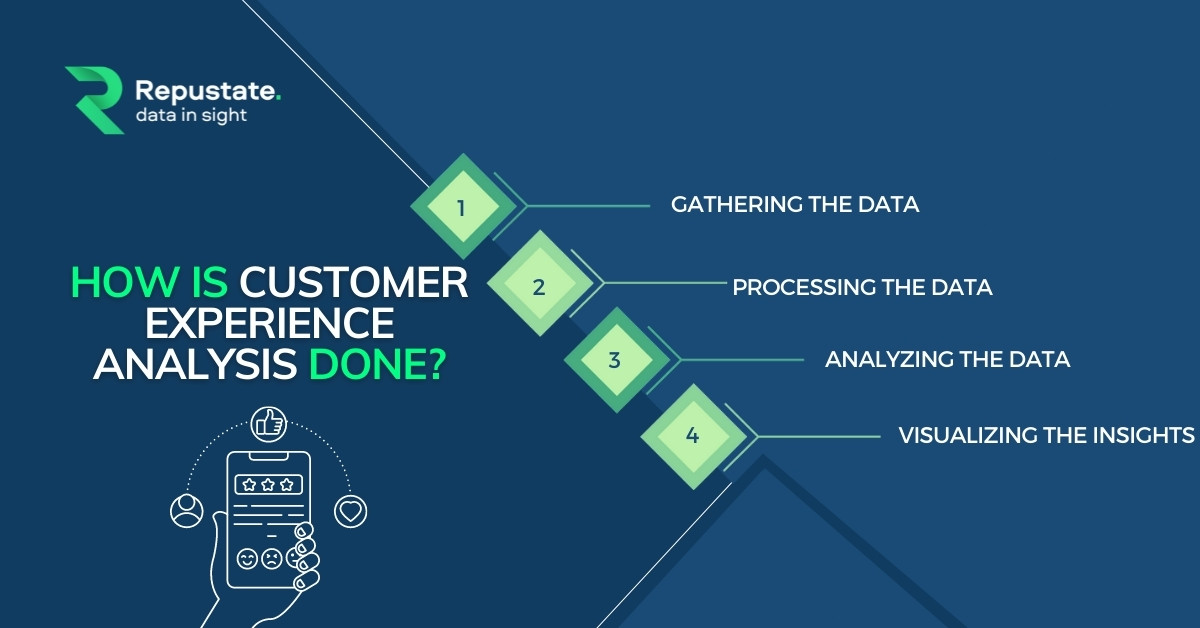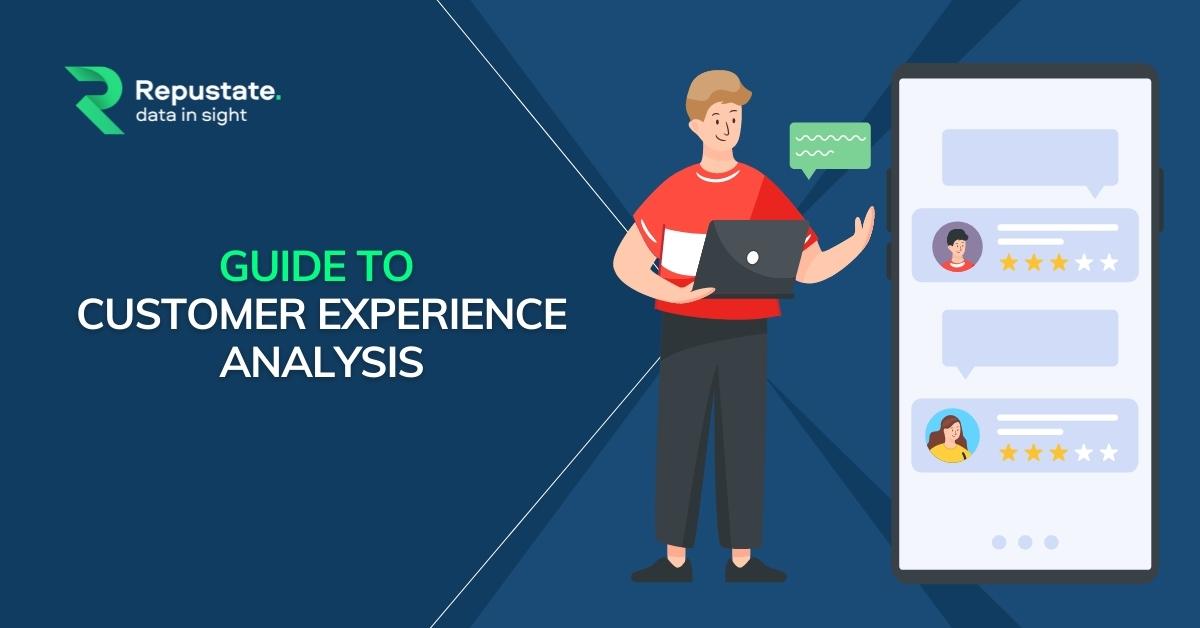Guide To Customer Experience Analysis
Customer experience analysis highlights how customers interact with important aspects of a business and how to meet their expectations. In this article we explore what customer experience analytics (CX analytics) is; how you can gather relevant consumer data for conducting CX analysis; and what results you can expect from the platform you choose for this function.
What is Customer Experience Analytics?
Customer experience analytics is the process of mapping your customer’s entire buyer’s journey in their experience with your brand. An AI-based machine learning platform processes all voice of the customer data derived from various sources and customer touchpoints as per your specific needs so that you can make data-backed decisions. Customer experience analysis takes into account both quantitative as well as qualitative data so you can monitor customer satisfaction, whatever route you take - customer service emails, call logs, surveys, social media listening including YouTube or TikTok consumer insights, and such.
How Is Customer Experience Analysis Done?
Customer experience analysis is done by first gathering the relevant data, cleaning it up and processing it through video content analysis, identifying and extracting entities, and extracting key aspects and features. The machine learning model analyzes this processed data for sentiment by reading it in the language it is written, and then projects it onto a visualization dashboard.
An important thing to note is that Repustate’s sentiment analysis platform for customer insights reads all data natively through a part of speech tagger built specifically for that language. The platform has the capability to analyze 23 languages including Chinese (simplified and traditional), German, Arabic, and Korean. Reading content natively, instead of using translations like other sentiment analysis or customer insights tools in the market do, gives more accurate results as no nuance or detail is lost in translation of the text.
Let’s look in detail how customer experience analytics is done by machine learning platforms.

1. Gathering the data
Data can be gathered from different kinds of sources depending on your business and audience demographics. If your brand is targeted towards generation Z you might want to tap into consumer comments on TikTok, Douyin, or even YouTube. For a more diverse and mature audience you can collect data from sources such as online product feedback resources like Google reviews, Amazon product reviews, and others.
Other sources of collecting consumer feedback are chatbot data, customer care emails and ticket information, call centre voice logs, and even metrics gathered through a product website’s customer footprint and purchase history. A machine learning platform can fetch the data, depending on the data sources it can access such as Facebook, Google Reviews, podcasts, etc. Social media have live APIs through which this data can be pulled for analysis. In other cases, you can collate the data for customer experience analytics into a .csv file and upload that onto the sentiment analysis platform manually.
2. Processing the data
The platform will now understand, categorize, segregate, and extract all the relevant information from the sea of data that you have collected for customer experience analysis. It does so by using natural language processing (NLP) and named entity recognition (NER) tasks.
The model processes the data, readying it for text analytics and sentiment analysis by first separating any data that is not in text format and preparing it for analysis. Repustate IQ does this uniquely through its enriched video content analysis capability, which includes functions such as search inside video. Below are the sub-tasks the platform undertakes in this step.
- Audio transcription- The audio data from the source video is transcribed so that it is available in text format. This is the same process that is undertaken for podcasts.
- Captions & overlay extraction- Any captions appearing in the video are identified and text appearing in it is extracted. This is especially useful when videos are sourced from TikTok, Instagram Live, or Douyin.
- Images extraction- All images including background images or those appearing on objects in the video are identified and extracted using optical character recognition. This is apt for Instagram, Facebook images, Pinterest, and such image-heavy data sources.
- Logos identification - Logos that pop up in the video are extracted by Repustate IQ’s data scanner. This functionality is very useful for competitor analysis or for contextual reference as to why your logo appeared on content not produced by you, or without your knowledge.
- Text extraction- Text appearing in the comments, reviews, blogs, news articles, etc are recognized and extracted. When social media is a source, text extraction also includes hashtags, emojis, code switches, etc. This is essential as social media lingo is more casual in nature and does not follow regular grammatical constructs.
3. Analyzing the data
The sentiment analysis model is trained with relevant training data so that it can automatically analyze any big data for customer experience analytics. This step in the process is where all the key functions like model’s multilingual capabilities, aspect-emotion co-occurrence patterns, granular emotion analysis, etc play their part in CX analysis. Let’s get to know these functions a little more.
- Training the ML model - The platform that will be used for customer experience analysis is trained on data specific to the industry. This data is cleaned and manually annotated. The results after training is complete are then compared to a validation dataset. This shows how close the model is to accurate answers. The model is re-trained until it reaches optimum accuracy. As with any other AI algorithm, the more the platform analyzes data, the more it recognizes patterns and learns them, thus giving more accurate results over time.
- Multilingual data processing - The model now analyzes the content in the language it is in. A consumer insights platform can give near 100% accuracy only if it reads the data in the native language instead of relying on translations.
- Creating custom tags - Customs tags are manually created for data based on the industry of the client. This helps the platform to identify important things like brand mentions, competitor names, brand names, aspects, features, locations, key people, and such.
- Topic classification - Natural language processing dissects all the data and makes sure that the texts are clubbed into classifications like food, drinks, clothes, price, etc. It is this functionality that reads millions of texts and segregates the data into different categories, which the client can then search for, for corresponding consumer sentiment.
- Sentiment analysis - This is the part of the AI-based sentiment analysis that uses sentiment analysis for customer experience analysis. All themes, topics, aspects, features, etc are categorized and isolated through text analytics and the sentiment for each one ascertained ranging from -1 to +1.
4. Visualizing the insights
The customer experience analytics derived from the data processing are now showcased on a sentiment analysis dashboard. These insights can be shared between teams for discussions and action plans. Since the data is shown in graphs, charts, and is colour coded, it is easier to understand. Furthermore, you can see comments related to whatever sentiment is projected i.e. you can check to see the exact negative comments that contributed to the red section of the pie chart that showed negative sentiment, and vice versa. The CX dashboard also shows the breakup of the customer demographic, and change in customer experience, and hence, sentiment, over time.
Why Do Companies Need Customer Experience Analysis?
Businesses need customer experience analytics because only accurate data-backed insights can enable you to make the right decisions. A sentiment analysis API driven customer experience analysis platform can streamline your CX processes and replace time-consuming manual segregating and analyzing of customer remarks, feedback, interactions, and iterations. You can use the insights collected from an AI-driven model for:
- Product enhancements
- Increased customer satisfaction
- New market outreach
- Brand engagement & awareness
- Better sales conversions
- Influencer programs
- Enriched public relations
- Competitor awareness
- Performance analytics
- Boosting revenue by reducing customer churn; and other important marketing and product decisions.
Know more about how companies use customer experience insights
Which Are Major Sources Of Gathering Customer Experience Insights?
The most important sources of collecting CX insights are from customer feedback mechanisms such as surveys or review websites, or even from third-party channels such as social media and news articles. Key sources for customer experience analytics include:
- Consumer surveys
- Customer emails
- Call Centre tickets and voice logs
- Social media channels
- Web footprint
- Purchase history
- Reviews and feedback data
- News channels
Read more about the importance of customer experience data sources.
What Insights Does A Customer Experience Dashboard Deliver?
A CX dashboard gives numerous customer experience analysis insights such as topic and aspect clustering to show what aspects and topics are most commonly associated with each other. It gives insights from multiple channels like blogs, videos, podcasts etc, all in one place. It reads all formats such as text, video, or image, and allows for you to submit alerts for keywords or mentions of your brands that pop up in social media listening, and more. Other important customer experience analytics insights include:
- Omnichannel Insights
- Topic & Aspect clustering
- Sentiment analysis of experience
- Topic, aspect & emotional experience co-occurrence
- Change in experience over time
- Named entities, classifications, and entity frequency(Word cloud)
- Semantic Search Insights
- Alerts for Media Monitoring
- Multilingual analytics
- Social media listening
- Demographic breakdown
- Segregation of Text, Audio & Video Analytics
Discover more about the insights a customer experience dashboard delivers.
Conclusion
An intelligent, AI-driven customer experience analysis platform can boost your productivity, efficiency, and revenue. Because Repustate can customize each CX model to fit your industry exactly, you are assured of the most precise results. Additionally, with its no-code technology, Repustate gives all the power to you so that you do not need a third-party technology vendor to alter the model for future instances.
 Home
Home
 Dec 9, 2021
Dec 9, 2021

 Jeremy Wemple
Jeremy Wemple
 Dr. Ayman Abdelazem
Dr. Ayman Abdelazem
 Dr. Salah Alnajem, PhD
Dr. Salah Alnajem, PhD
 David Allen
David Allen

 Repustate Team
Repustate Team

